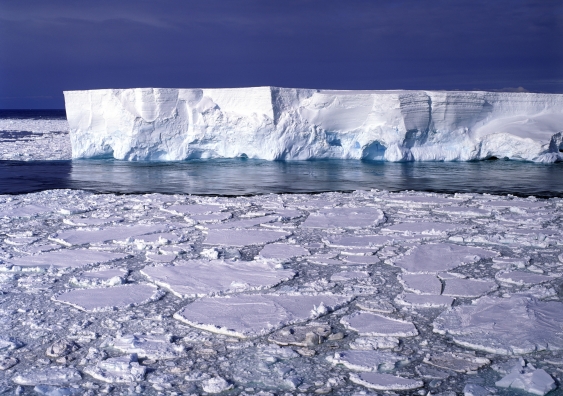A jump in global average temperatures of 1.5°C–2°C will see the collapse of Antarctic ice shelves and lead to hundreds and even thousands of years of sea level rise, according to new research published in Nature.
The research highlights the moral significance of decisions made now about mitigating climate change.
An international team led by Dr Nicholas Golledge, a senior research fellow at New Zealand's Victoria University’s Antarctic Research Centre, published the study ‘The multi-millennial Antarctic commitment to future sea-level rise’, which predicts how the Antarctic ice-sheet will respond to future atmospheric warming.
“Without significant reduction in greenhouse gas emissions, we will commit the Antarctic ice sheet to ongoing and widespread melting for the next few thousand years. Is that something for which we really want to be responsible?”
Using state-of-the-art computer modelling, Dr Golledge and his colleagues including researchers from UNSW simulated the ice-sheet’s response to a warming climate under a range of greenhouse gas emission scenarios. They found in all but one scenario (that of significantly reduced emissions beyond 2020) large parts of the Antarctic ice-sheet were lost, resulting in a substantial rise in global sea-level.
“The long reaction time of the Antarctic ice-sheet – which can take thousands of years to fully manifest its response to changes in environmental conditions – coupled with the fact that CO₂ lingers in the atmosphere for a very long time means that the warming we generate now will affect the ice sheet in ways that will be incredibly hard to undo,” Dr Golledge said.
The 2013 Intergovernmental Panel on Climate Change (IPCC) report predicted that the Antarctic ice sheet would contribute only five centimetres to global sea-level rise by the end of this century even for its warmest emissions scenario.
But Professor Tim Naish, who worked with Dr Golledge on the study and was also a lead IPCC author, said that when the report was written there was insufficient scientific knowledge about how the Antarctic ice sheet might respond to future warming. Those sea-level projections could have been too modest.
“Our new models include processes that take place when ice sheets come into contact with the ocean, he said.
“Around 93% of the heat from anthropogenic global warming has gone into the ocean, and these warming ocean waters are now coming into contact with the floating margins of the Antarctic ice sheet, known as ice shelves. If we lose these ice shelves, the Antarctic contribution to sea-level rise by 2100 will be nearer 40 centimetres.”
To avoid the loss of the Antarctic ice shelves, and a long-term commitment to many metres of sea-level rise, atmospheric warming needs to be kept below 2°C above present levels.
“Missing the 2°C target will result in an Antarctic contribution to sea-level rise that could be up to 10 metres higher than today,” Dr Golledge said.
“The stakes are obviously very high—10 percent of the world’s population lives within 10 metres of present sea level.”
What makes the report particularly compelling is the way the results were reached.
“The striking thing about these findings is that we have taken the most conservative estimates possible.”
“The striking thing about these findings is that we have taken the most conservative estimates possible,” said co-author of the paper, Dr Chris Fogwill from UNSW Australia's Climate Change Research Centre.
“In all IPCC global warming scenarios, only one (RCP2.6) saw Antarctic ice shelves avoid ongoing collapse. In every other case we saw significant collapse and rising sea levels continue for hundreds to thousands of years.
“The results suggest Antarctic ice shelf stability has a tipping point dependent on a critical temperature threshold that can lead to substantial sea level rise even if we reduce emissions after that threshold has been reached.”
The findings raise an ethical decision for us all, according to Dr Golledge.
“Without significant reduction in greenhouse gas emissions over the next couple of decades, we will commit the Antarctic ice sheet to ongoing and widespread melting for the next few thousand years. Is that something for which we really want to be responsible?”
Dr Golledge said the time has come for some serious questions to be answered.
“It becomes an issue of whether we choose to mitigate now for the benefit of future generations or adapt to a world in which shorelines are significantly re-drawn.
“In all likelihood we’re going to have to do both, because we are already committed to 25 centimetres by 2050, and at least 50 centimetres of sea-level rise by 2100.”
According to Dr Golledge the last time CO₂ concentrations in the atmosphere were similar to present levels was about three million years ago.
“At that time average global temperatures were two or three degrees warmer, large parts of the Antarctic ice-sheet had melted, and sea-levels were a staggering 20 metres higher than they are now.”
“We’re currently on track for a global temperature rise of a couple of degrees which will take us into that ballpark, so there may well be a few scary surprises in store for us, possibly within just a few hundred years.”


